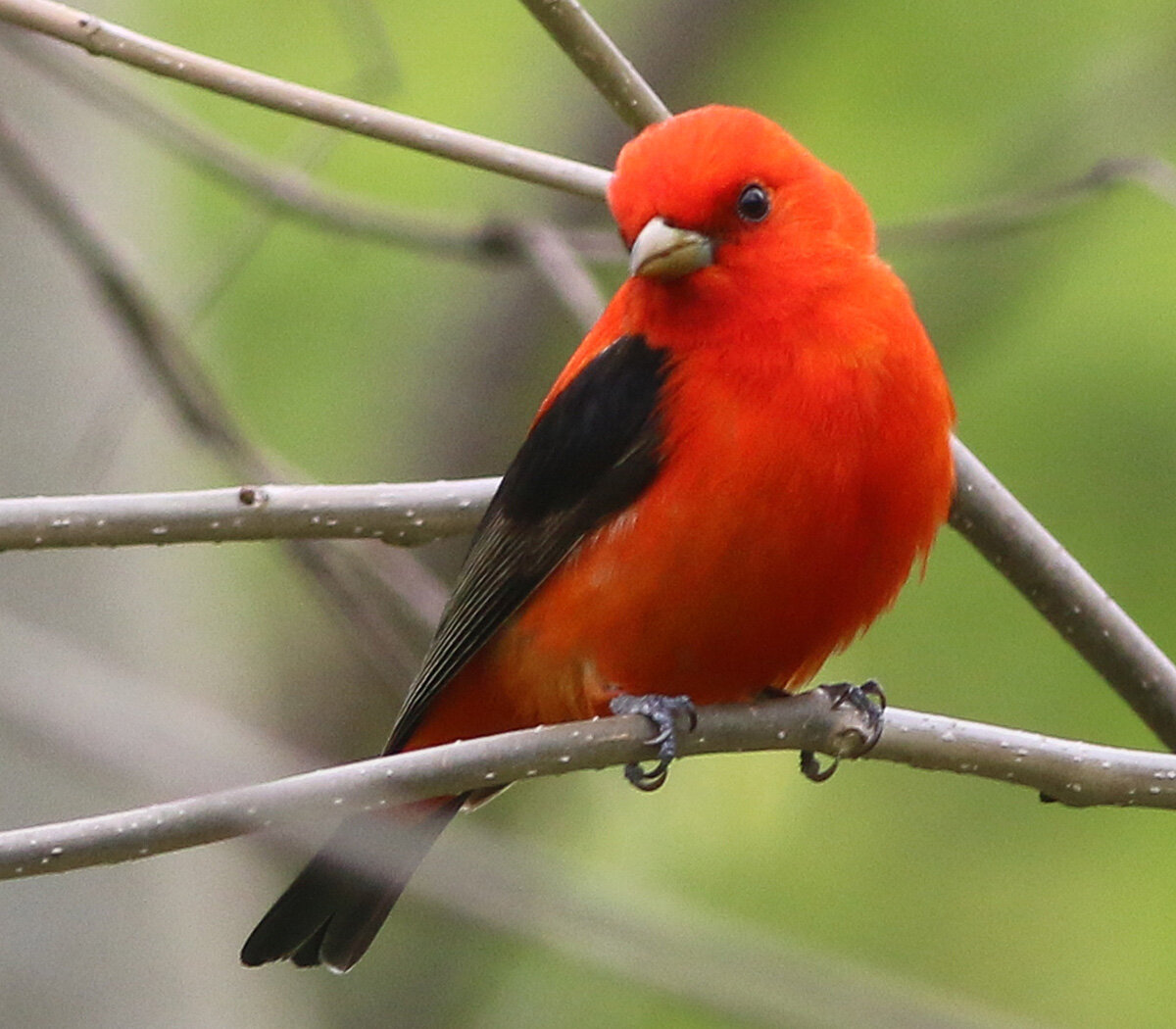Three birds, similar stories. We are in a climate crisis, and a bird emergency. Higher temperatures, more storms, changes in food supply, and more make the future for many of the world’s — and our state’s — birds look pretty grim. These three examples shed some light on the problem, and most importantly, the real, impactful things we all can do to help.
Bobolinks on the Brink
A bobolink sits in a grassland, perching on a dried flower stalk. Its backwards tuxedo and straw-colored hat plumage are clearly visible. Photo by Rick Kelley
The bobolink (Dolichonyx oryzivorus, Latin for “long-clawed rice-eater”) is a songbird that migrates over 2,000 miles to and from southern South America each year. Did you glimpse this bird last summer, with its backwards tuxedo and straw skull-cap plumage? Or maybe you heard its bubbling R2-D2-like song while strolling through your favorite natural area. The bobolink is a true highlight of the Wisconsin summer and a quintessential spirit of our prairies. It nests is grasslands and agricultural fields, and relies on insects and seeds for survival.
Bobolinks may be your favorite bird - they are certainly the favorite of many!
Things aren’t looking so sweet for this dandy bird, due to climate change and habitat destruction. Grassland birds like the bobolink have declined by over 50% in the last 50 years, and an estimated 720 million grassland birds have been lost since 1970 (Rosenberg et al 2019). And looking forward, bobolinks have been identified as at high risk for vulnerability to climate change in 98% of its range in Wisconsin. This is according to the brand new 2019 climate change report by National Audubon that was released last week.
Keeping Tanagers in Wisconsin
A scarlet tanager perches on a branch, its bright red body and black wings in full view. Photo by Kelly Colgan Azar
Scarlet tanagers need us to be bold. This strikingly beautiful forest bird, with its unmistakable coloring and jaunty tune of “cheer-up; cheer-a-lee; cheer-ee-o,” faces a grim future in the face of climate change.
Already, over 170 million eastern forest birds, like scarlet tanagers, have been lost in the last 50 years. Looking forward, scarlet tanagers have been identified as at high risk for vulnerability to climate change, projected to lose its breeding habitat in MOST of Wisconsin by 2100 under worst-case scenarios.
That means that most of the tanager-loving folks in Wisconsin -- and all of us in south-central -- will no longer see these beautiful birds nesting in our forests. Or hear their songs to call in mates and denote territory.
Here’s the good news: if climate change is kept to a minimum (1.5 degrees Celsius instead of 3 degrees), the scarlet tanager’s summer habitat range will be largely maintained in Wisconsin! It’s incredible the difference 1.5 degrees can make!
Wisconsin’s Woodpeckers Need You.
On the left, two red-headed woodpeckers look out from a dead tree branch, their red heads striking in the sunlight. Photo by Arlene Koziol. Right, a yellow-bellied sapsucker perches vertically on a tree, ready to drill. Photo by Tom Benson
Woodpeckers know how to make an impression. Big, small, obvious or elusive, these distinct birds with their tell-tale drilling and checkerboard coloring are a staple of Wisconsin's woodlands. And they're in danger because of climate change.
Two species we know and love in south-central Wisconsin are highly vulnerable to climate change and face possible extinction. The yellow-bellied sapsucker could lose its entire habitat in Wisconsin by 2100 under the worst-case scenario.
The red-headed woodpecker could lose some habitat in southern Wisconsin, maintain habitat in central Wisconsin, and even gain habitat in northern part of the state. But, even with those gains, the species could lose 94% of its habitat nation-wide. Its only hope for finding appropriate woodlands to raise its young would be in the Upper Midwest. That is bad news for this beautiful species.
These are things you can influence.
A scarlet tanager tilts its head as it looks at the camera while perched on a branch. Can you help this incredible bird? Photo by Fishhawk
Together we can take aggressive action and keep climate warming to a minimum (1.5 degrees Celsius) so that scarlet tanagers and many other birds stand a much better chance. Reducing fuel emissions in travel and lifestyle, limiting consumerism, supporting natural carbon-sinking efforts (like native habitat restoration), and paying close attention to the candidates you vote for can have a big impact on these factors.
Birds are amazing, and so are people like you who work hard to protect them! Learn more about the 2019 climate change report “Survival by Degrees: 398 bird species on the brink” here, about the loss of 3 billion birds in the US since 1970 here, or about your local Audubon chapter here.






